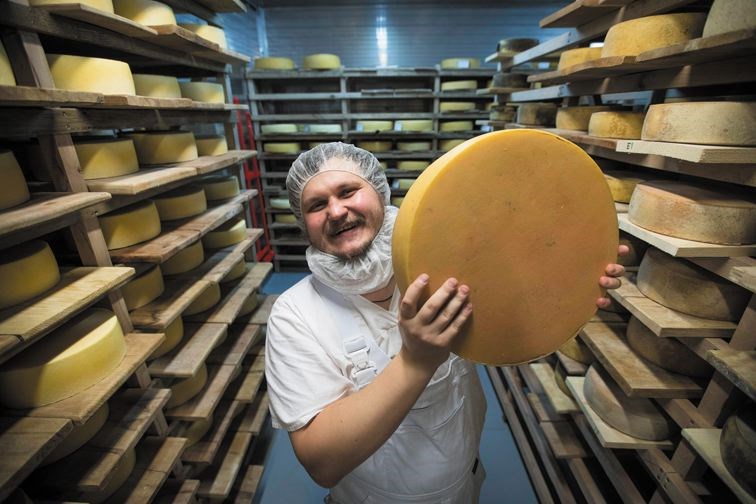Much has been said recently about processed food, implying they are somehow bad for people.
But humans have been processing food for hundreds of thousands if not millions of years.
Evidence suggest our ancestors learned how to cook meat as far back as 2.5 million years ago and cooking food is a form of processing.
However, of all of our processed foods, one of the oldest must be cheese. It is probably a close thing as to whether wines or cheeses were being made first, but this is perhaps why they go so well together.
The origins of cheese is lost to history. However, one likely scenario is a shepherd utilized the stomach of a young goat as a bag to carry transport some milk. (Such bags were common as they were simple to make by tying off one end.)
The milk sloshing around in the stomach reacted with residual enzymes turning into a mixture of curds and whey. Separation of the curds resulted in a young cheese. Eventually people learned to age the cheese by a variety of processes leading to all of the wonderful different cheeses now available at the grocery store.
Of course, it is also possible to make cheese by adding any acid to a warm vat of milk. Vinegar or lemon juice will do the trick. Gently scald the milk bringing it to a temperature between 32 and 38 degrees Celsius and then add a tablespoon of acid for every cup of milk.
The curd proteins, called caseins, will quickly conglomerate into a viscous mass and can be separated from the whey. Cheesecloth is a suitable material for straining the curds.
The raw curds are also called acid casein and are actually a naturally occurring polymer. It can be shaped or molded to give a bio-degradable form of plastic material. The proteins in the casein cross-link to hold the material together.
Unfortunately, it is not particularly strong and is brittle, breaking into pieces if mishandled. Still, it was used to make buttons during the Second World War which could be eaten to provide a small shot of protein. The taste leaves something to be desired due to the acid.
Modern cheese manufacturers use enzymes to separate the curds and whey.
The most common is rennin which is present in the gastric juices of young animals to aid in the digestion of their mother's milk. This lends credence to the legend about the origin of cheese.
It is also possible to separate the caseins using bacterial growth. Culturing bacteria in milk results in the production of lactic acid and this slowly changes the acidity of the medium. Done in a controlled fashion, this process will eventually result in cheese or can be used to make yogurt. It sometimes happens spontaneously on the kitchen counter due to ambient bacteria if a small amount of milk is left in the bottom of glass overnight.
The unique flavours associated with different cheeses result from variations in the large number of chemical compounds found with the fat, proteins, and carbohydrates within milk and the chemical conversions these compounds undergo during the aging process for the cheese. For example, cheddar cheese developed its particular hardness and flavour as a result to calcium carbonate and other components in the limestone as it was aged in the caves lining the Cheddar gorge in England.
Many of the flavouring components of cheese have been identified. Chemists at Kraft have identified 36 compounds which combine together to give the flavor of Limburger cheese. By carefully combining these compounds, it is possible to artificially construct Limburger flavoured foods such as potato chips or ice cream. The question is why would anyone want to?
Other flavouring compounds have been identified.
Roquefort cheese gets its distinctive flavour from 2-heptanone generated by the mold used in forming the cheese.
Caproic acid gives goat cheese its strong flavour. It is also the compound responsible for the distinctive aroma of a wet goat. Butyric acid has been found in a number of different cheeses as well as the distinctive odour of sweaty feet.
Of course, this might be a case of a little knowledge spoiling a good thing.
The variety and quantity of flavour-inducing compounds is dependent upon a number of factors such as the kind of milk - 19 different animal milks are used to make different types of cheeses - and the processing used to make the cheese.
The temperature at which the curds are formed, the length of aging, the type of bacteria present, the straw mats the cheese is stored upon all influence the type and taste of the cheese produced.
Even the time of day the cow is milked can affect the taste of cheese.
The vast array we have available is a consequence of the many ways of processing milk into cheese.



